.
In the middle of the 1950s, a team under the guidance of engineer Philipp Kurth wanted to design a wristwatch as rugged as possible. Through countless experiments they finally developed the construction principle of the DS models. DS stands for “Double Security.” This was achieved by a floated mounting of the entire movement with an elastic shock absorber ring in addition to the conventional shock absorber (Incabloc). In addition, there was an air gap between the dial and case, so the movement could move in all directions. Other features were: added sealing, an extra thick and sheathed Plexiglass, combined with a reinforced case back.
Despite the classical styling with the Bombay band lugs, the watch was very robust. It held out against drop impact from up to 6 metres and was water resistant up to 200 metres. The first watches, which came on the market in 1959, had dauphine hands and a flat case back without the turtle logo. As movement, the 25-45 was used. Very early specimens still had evidence of the patent application instead of the patent number engraved on the inside of the case back. This patent (346825) was related to the shock mount of the movement and was registered on May 8, 1958 by case manufacturer Huguenin Frères (see patent drawing on the right).
From the end of 1960 onwards, the new 25-65 and 25-651 movements were used, and the famous turtle was engraved on the case back. The manual-wind version had a flat case back, and the automatic version had a case back with a wave pattern in relief.
Here you can find a small gallery with which you can track the evolution of the DS case back.
 In 1960, the Certina DS was able to prove their robustness on the Himalaya. On 13 May 1960 a Swiss team, under the leadership of Max Eiselin, succeeded to reach the summit of the Dhaulagiri (8167m). At this time it was the second last not yet climbed eight-thousander.
In 1960, the Certina DS was able to prove their robustness on the Himalaya. On 13 May 1960 a Swiss team, under the leadership of Max Eiselin, succeeded to reach the summit of the Dhaulagiri (8167m). At this time it was the second last not yet climbed eight-thousander.
In this expedition, for the first time a cargo plane was used to transport the equipment as well as the members to the base camp 2 at 5700 m altitude. Thereby, the prototype of the Pilatus Porter PC-6 (HB-FAN) set the, still valid, record for highest landing. Mr. Eiselin named this airplane “Yeti”. It crashed during the difficult takeoff maneuvre on May 5, 1960 but nobody was injured.
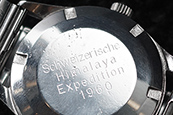 The members of this expedition were equipped by Certina with DS Automatic watches. It was the reference 5601 003 with date, equipped with a Guy Frères metal band. On the caseback of these watches “Schweizer Himalaya Expedition 1960” is engraved (see picture on the right). In October 2015 I was allowed to meet Max Eiselin personally and had thereby the opportunity to photograph his watch.
The members of this expedition were equipped by Certina with DS Automatic watches. It was the reference 5601 003 with date, equipped with a Guy Frères metal band. On the caseback of these watches “Schweizer Himalaya Expedition 1960” is engraved (see picture on the right). In October 2015 I was allowed to meet Max Eiselin personally and had thereby the opportunity to photograph his watch.
In 1963 at Eiselins Expedition to the Hindukusch the watches were also there. In his book “Wilder Hindukush” they are even mentioned as equipment.
More promotionally effective endurance tests demonstrated the resilience of the DS concept. Thus, the Certina DS became the epitome of a particularly robust wristwatch.
To emphasize the theme of robustness, they brought out the “DS Automatic Amagnetic” in 1964. This model had an additional magnetic protection up to maximally 800 Gauss (500 permanent).
Besides the models which are listed below, even some Dive watches were available in the DS line. You can find these in this rubric.
As in 1968, finally the successor of the DS, the DS-2 came on market, more than 300’000 pieces of the DS had been sold worldwide.
| Model | Reference no. | Calibre | Dimensions mm | Comments | |
|---|---|---|---|---|---|
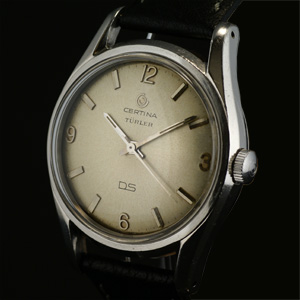 |
DS | 5101 013 | Certina 25-36 | 36 x 45.5 x 11.5 LW: 18 |
No Date Various dial versions From 1959 to 1960 |
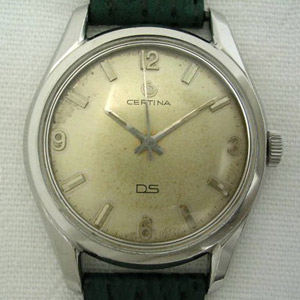 |
DS | 5101 013? | Certina 25-66 | 36 x 45.5 x 11.5 LW: 18 |
No Date Various dial versions From 1960 to 1968 |
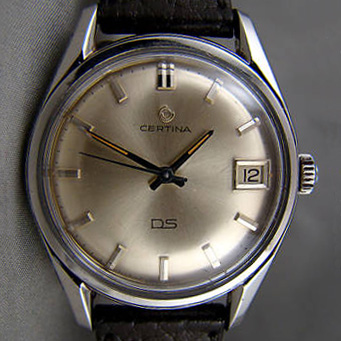 |
DS | 5301 013 | Certina 25-661 | 36 x 45.5 x 11.5 LW: 18 |
Date without quickset Various dial versions From 1960 to 1968 |
| Model | Reference no. | Calibre | Dimensions mm | Comments | |
|---|---|---|---|---|---|
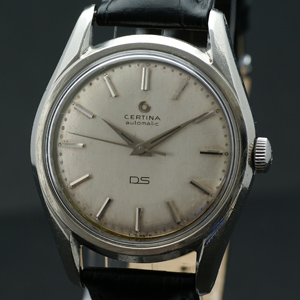 |
DS Automatic | 5601 012 | Certina 25-45 | 36 x 45.5 x 11.5 LW: 18 |
No Date Various dial versions Dauphine hands From 1959 to 1960 |
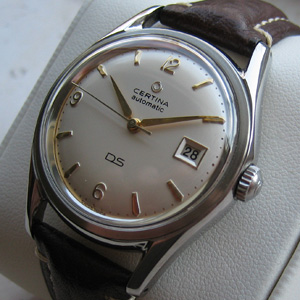 |
DS Automatic | 5601 003 | Certina 25-451 | 36 x 45.5 x 11.5 LW: 18 |
Date without quickset Various dial versions From 1959 to 1960 |
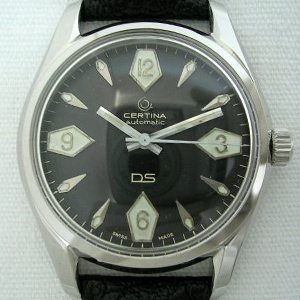 |
DS Automatic | 5601 112 | Certina 25-65 | 36 x 45.5 x 11.5 LW: 18 |
No Date Black dial. Indices coated with luminescent color From about 1960 |
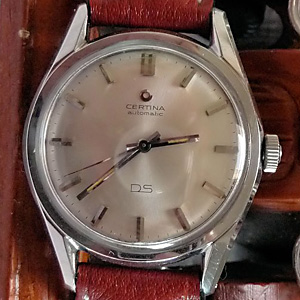 |
DS Automatic | 5601 112 | Certina 25-65 | 36 x 45.5 x 11.5 LW: 18 |
No Date Various dial versions From about 1960 |
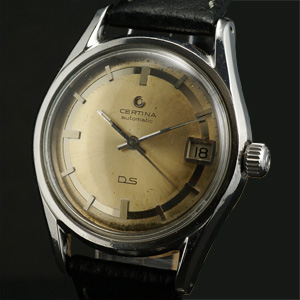 |
DS Automatic | 5801 112 | Certina 25-651 | 36 x 45.5 x 11.5 LW: 18 |
Date without quickset Various dial versions From 1962 to 1968 |
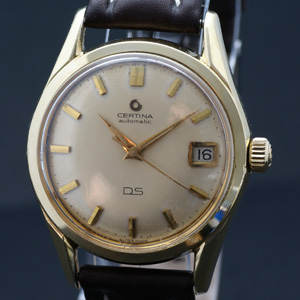 |
DS Automatic | 5806 012 | Certina 25-651 | 36 x 45.5 x 11.5 LW: 18 |
Date without quickset Case in 20 micron goldplaque From 1960 to 1968 |
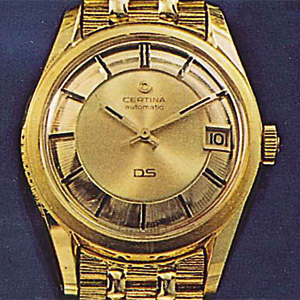 |
DS Automatic | 5880 112 | Certina 25-651 | 36 x 45.5 x 11.5 LW: 18 |
Date without quickset Bracelet, case and dial in 18 carat yellow gold From 1962 to 1968 |
| Model | Reference no. | Calibre | Dimensions mm | Comments | |
|---|---|---|---|---|---|
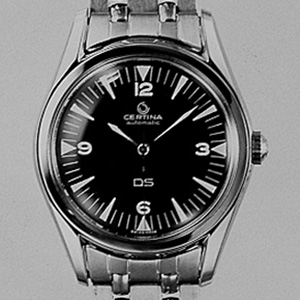 |
DS Automatic Amagnetic First Gen. |
5601 114 | Certina 25-65 | 36 x 45.5 x 11.5 LW: 18 |
Resistant to magnetic fields 500 Gauss. Whitout Date From 1964 to 1968 |
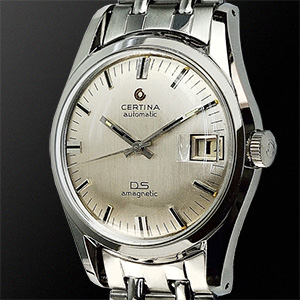 |
DS Automatic Amagnetic | 5801 114 | Certina 25-651 | 36 x 45.5 x 11.5 LW: 18 |
Resistant to magnetic fields 500 Gauss. Date without quickset So far, Three dial versions are known From 1965 to 1968 |
Update: 01.02.2020
The author of vintagecertinas.ch is not responsible for any content linked to or referred to on these pages.


